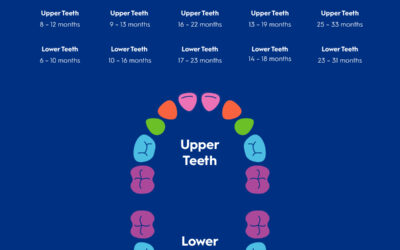Cavities are a common concern, but how long does it really take for one to form? The answer depends on several factors like your oral hygiene habits, diet, and overall health. In this blog, we’ll explore how cavities develop, what signs to watch for, and what you can do to prevent them. By understanding the timeline and process of cavity formation, you can take steps to keep your teeth healthy and avoid the pain and cost of dental decay.
How Does a Cavity Form?
The answer is that cavities form when the enamel, the hard outer layer of your teeth, is worn down by acid. This acid is produced by bacteria in your mouth that feed on sugary or starchy foods. When you don’t clean your teeth well, plaque forms, and the bacteria in plaque produce acid that attacks the enamel. Over time, this weakens the enamel, leading to a hole or cavity.
How Do You Know a Cavity Is Forming?
The answer is that you might know a cavity is forming if you notice early signs like tooth sensitivity, mild pain when eating or drinking, or visible pits or holes in your teeth. If you see these signs, it’s important to visit a dentist quickly to stop the cavity from getting worse.
How Long Does It Take a Cavity to Form?
The answer is that it can take anywhere from a few months to several years for a cavity to form. The time it takes depends on factors like your oral hygiene, diet, and how prone your teeth are to decay. Good oral hygiene can slow down cavity formation, but poor habits can speed it up.
What Are Dental Cavities?
Dental cavities, or tooth decay, happen when acid from bacteria in your mouth damages your teeth. Cavities start with plaque, a sticky film that forms when bacteria, food particles, and saliva mix. If not cleaned off, plaque hardens into tartar, which leads to more acid attacks on the enamel. Over time, this process creates cavities, which are small holes in your teeth.
Stages of a Cavity
- Plaque Formation: Plaque begins forming on your teeth after eating, especially sugary or starchy foods.
- Enamel Demineralization: The acid in plaque starts to wear down the enamel, causing it to lose minerals.
- Dentin Decay: If not treated, the acid reaches the dentin, the softer layer beneath the enamel, and the decay speeds up.
- Cavity Formation: A hole or cavity forms, which can grow larger and deeper if left untreated.
Factors That Affect How Cavities Form
Diet and Nutrition
Eating a lot of sugary or starchy foods feeds the bacteria in your mouth, leading to more acid production and a higher risk of cavities. Eating a balanced diet with fruits, vegetables, and whole grains can help protect your teeth.
Oral Hygiene Habits
Brushing and flossing regularly removes plaque from your teeth and gums, helping to prevent cavities. Using fluoride toothpaste also strengthens your enamel. Poor oral hygiene, like not brushing often enough, increases your risk of cavities.
Genetic Factors
Some people are more prone to cavities due to genetics. This can include having weaker enamel or more bacteria that cause decay. However, good oral hygiene can still help reduce the risk.
Environmental Factors
Living in areas with fluoridated water can help protect your teeth from cavities. On the other hand, lack of access to dental care or exposure to secondhand smoke can increase your risk.
Preventing Cavities: Best Practices
- Brush and Floss Regularly: Brush your teeth twice a day with fluoride toothpaste and floss daily to remove plaque.
- Visit the Dentist Regularly: Regular check-ups help catch cavities early and prevent them from getting worse.
- Eat a Balanced Diet: Limit sugary and acidic foods. Instead, eat foods that are good for your teeth, like fruits, vegetables, and dairy products.
- Use Fluoride: Fluoride strengthens enamel and helps prevent cavities. Use fluoride toothpaste and mouthwash, and drink fluoridated water if available.
- Consider Dental Sealants: Sealants protect the chewing surfaces of your back teeth from cavities. They’re especially helpful for children.
Treatment Options for Cavities
- Fillings: The dentist removes the decay and fills the cavity with a material like resin or amalgam to restore the tooth.
- Root Canals: If the decay reaches the tooth’s pulp, a root canal is needed to remove the infected tissue and save the tooth.
- Crowns: For large cavities, a crown may be placed over the tooth to protect and restore it.
- Extractions: If the tooth is too damaged to save, it may need to be removed. After extraction, you can discuss options for replacing the tooth, such as implants or bridges.
Taking care of your teeth is the best way to prevent cavities from forming. By understanding how cavities develop and what factors contribute to them, you can make smarter choices to protect your smile. Remember, regular dental check-ups, good oral hygiene, and a balanced diet are your best defenses against tooth decay. If you suspect a cavity, don’t wait—early treatment can save your tooth and keep your mouth healthy. Stay proactive about your dental health, and your teeth will thank you for years to come!





0 Comments